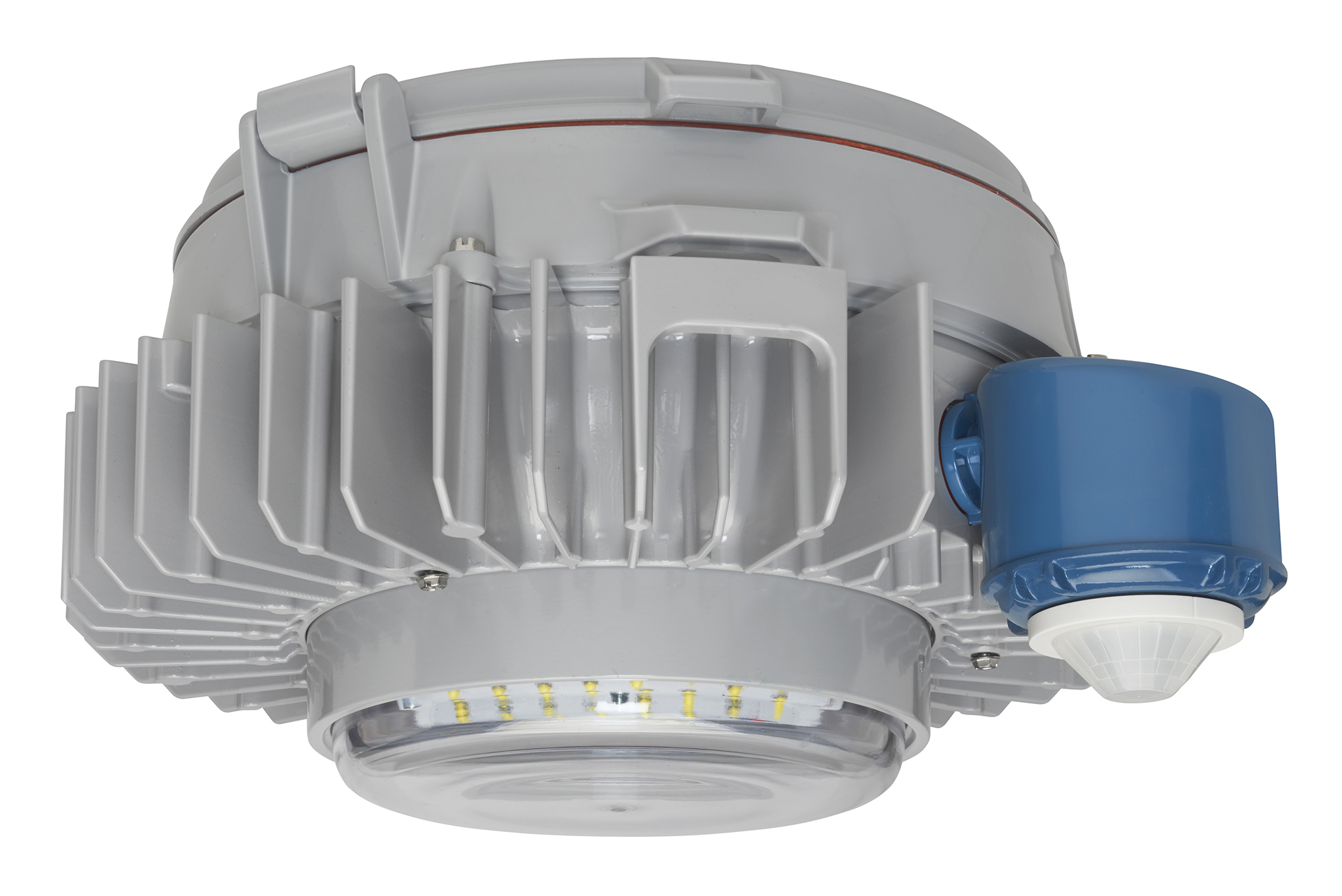Exclusive: Emerson Updates LED Lighting Market Trends
Connected lighting increases system ROI.
 It is common knowledge that LED lighting is up to 65 percent more energy efficient than the traditional HID or HPS systems found in the majority of industrial locations. However, plant managers may not be aware that connecting LED lighting further reduces costs by as much as another 60 percent.
It is common knowledge that LED lighting is up to 65 percent more energy efficient than the traditional HID or HPS systems found in the majority of industrial locations. However, plant managers may not be aware that connecting LED lighting further reduces costs by as much as another 60 percent.
These savings can be attributed to energy-saving controls providing the ability to analyze energy consumption patterns, and improved visibility into fixture health monitoring that reduces maintenance requirements and production downtime. Connected lighting refers to a system of luminiaires equipped with sensors that are linked to a network, allowing them to transmit and receive data and be controlled remotely through the networked system.
"Recent advances in connected lighting have been rapidly adopted in commercial buildings where it captures valuable insights into energy usage and enables users to make real-time adjustments to lighting levels for improved efficiency, comfort and safety," said Edward Brann, Connected Solutions Product Manager/Appleton Group, Emerson Automation Solutions. "Sensors attached to the luminaires can also gather data on occupancy, humidity and temperature. When combined with LED technology, a networked lighting system in a commercial building can typically pay for itself in less than two years due to better space utilization and energy savings."
Unlike in commercial settings, web-based monitoring of luminaire health or control of lighting in hazardous and harsh industrial locations has been challenging due to a lack of robust, certified solutions. Emerson is changing that.
The latest Compliance Lighting Solutions
Emerson recently introduced the Appleton Mercmaster Connect LED Luminaire rated for Class I, Division 2 and Zone 2 hazardous locations and the Appleton Wireless Motion Sensor featuring Emerson WirelessHART® technology. WirelessHART networks and sensors are currently being used in a wide range of process measurements, usually at dramatically lower costs as compared to wired alternatives, with faster installation time and minimal disruption.
The Appleton Mercmaster Connect, can be linked wirelessly to Plantweb Insight™ software via Emerson WirelessHART™ network technology. This innovative solution provides facility managers with continuous monitoring of their LED lighting with real-time insights gained into sustainability goals, diagnostics and illuminance levels from any remote location, at dramatically lower costs as compared to wired alternatives, with faster installation time and minimal disruption to plant operations.
If a WirelessHART network is installed, the Mercmaster Connect will join it using pre-programmed network and join keys. Even without a network, the sensor will detect motion for smart illumination of the area. If no motion is detected, the Mercmaster Connect either will turn off or dim down to a customer programmable pre-set level of lighting intensity.
The Time Out delay and dimming output can be programmed using an Emerson AMS TREX Communicator or AMS platform that puts this smart, connected technology in the hands of employees, enabling them to be more efficient and have an ever-increasing impact from their work.
The Appleton Mercmaster Connect LED Luminaire is the next step in digital transformation for Appleton hazardous location lighting," said Brann. "With quick and accurate data analysis made possible by Plantweb Insight, it is much easier to prioritize maintenance and identify potential hazards or failures that may put the safety, reliability, and compliance of a facility at risk."
Health Status
Lowering lighting maintenance to a minimum is a foremost goal in hazardous locations, one that is made possible with the Appleton Mercmaster Connect LED Luminaire and Emerson Plantweb Insight solution. Adding lighting controls can extend the operating life of the luminaire up to twice that of a non-connected version.
Plantweb Insight generates a walkdown list of luminaires with their location for the maintenance team to assess operating conditions and will remotely alert maintenance staff of any problems including connectivity status, internal electronic faults, end of life, over temperature and water ingress.
Diagnostic data and analytics availability to the facilities team from Plantweb Insight means less time and money spent on lighting maintenance.
Rated for Hazardous Locations
Appleton Mercmaster Connect LED luminaires deliver exceptional energy efficiency, unmatched reliability and the industry's most advanced engineering. Designed to utilize as little as 46 Watts of power, the luminaires lower a plant's energy consumption by as much as 70% when compared to HID alternatives, while providing 60,000+ hours of running lamp life.
Their flexible, modular design allows for retrofits and plant expansions to meet unique installation requirements. Certified for Class I, Division 2 and Zone 2 locations, they provide lighting solutions for a wide range of industrial and hazardous applications, including oil refineries, petrochemical facilities, chemical plants, power generation plants, and other areas where flammable gasses and vapors may be present.
An Emerging Trend: Banning Flourescent Lights
There is a major movement towards the ban of fluorescent lighting, especially in Europe. Fluorescent light is created from chemical reactions that occur when electricity is applied to mercury vapor enclosed in a glass vacuum chamber. While highly effective in generating white light, mercury vapor is highly toxic. Mercury is on the World Health Organization’s top ten most dangerous chemicals to public health.
In addition, fluorescent lighting has become relatively less energy-efficient as new lighting technologies have emerged. For these reasons, the European Commission has revised its Ecodesign and Energy Labelling Directive to ban virtually all fluorescent lamps by 2023 and require they be replaced with mercury-free and more energy efficient lighting sources.
Several U.S. states recently banned (or are about to ban) the sale of all linear fluorescent lamps with a CRI of 87 or higher: Vermont (effective July 2020) Hawaii (effective January 2021) Colorado (effective January 2021) and Washington D.C. (effective January 2022).
















